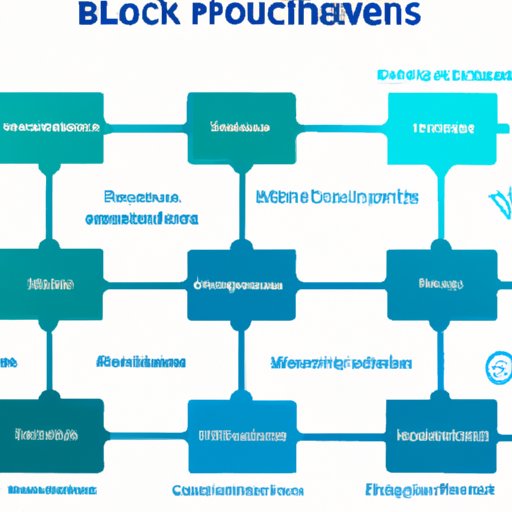Introduction
Blockchain technology is a revolutionary new way of storing and transferring data. It is a peer-to-peer distributed ledger system that allows users to securely store and transfer data without the need for a centralized authority or third party. It has become increasingly popular due to its ability to provide secure, immutable records and facilitate trustless transactions.
Using a blockchain application can be beneficial for businesses, as it can help them to streamline processes, improve security, and reduce costs. Furthermore, there are numerous use cases for blockchain applications, from digital identity management to smart contracts.
Types of Blockchains
When building a blockchain application, one of the first steps is to determine which type of blockchain is best suited for the project. There are three main types of blockchains: public, private, and consortium.
Public Blockchains are open source and anyone can join the network. These networks are decentralized and offer the highest level of security but have limited scalability. Examples of public blockchains include Bitcoin and Ethereum.
Private Blockchains are permissioned networks that are controlled by a single entity or organization. They are more scalable than public blockchains but less secure. Examples of private blockchains include Hyperledger Fabric and Quorum.
Consortium Blockchains are similar to private blockchains but are managed by multiple entities. They offer a good balance between security and scalability.
Steps to Build a Blockchain Application
Once the type of blockchain has been determined, the next step is to begin building the application. The following steps should be followed when building a blockchain application:
1. Research and determine use cases. Before beginning development, it is important to understand the purpose of the application and what use cases it will be used for. This will help to ensure that the right type of blockchain is chosen and the right features are implemented.
2. Choose the right type of blockchain. As mentioned above, there are three main types of blockchains: public, private, and consortium. Each type has its own advantages and disadvantages, so it is important to choose the right one for the project.
3. Design the architecture and features. After choosing the type of blockchain, the architecture and features of the application must be designed. This includes deciding which consensus algorithm to use and which features to include, such as smart contracts and tokenization.
4. Develop the application. Once the architecture and features have been designed, the application can be developed. This involves writing code and testing the application to make sure it meets the requirements.
5. Test and deploy the application. Once the application has been developed, it needs to be tested to ensure that it works as expected. Once the tests have been completed, the application can be deployed to the chosen blockchain.

Benefits and Challenges of Building a Blockchain Application
Building a blockchain application can provide numerous benefits, such as improved security, reduced costs, and streamlined processes. Furthermore, it can also help to increase transparency and trust between parties.
However, building a blockchain application also comes with its own set of challenges. These include the complexity of the technology, the cost of development, and the lack of skilled developers. Additionally, there may be regulatory compliance issues that need to be taken into account.
Conclusion
Building a blockchain application can be a complex process but can also provide numerous benefits. It is important to research and determine use cases, choose the right type of blockchain, design the architecture and features, develop the application, and test and deploy the application. Additionally, there are both benefits and challenges associated with building a blockchain application. By understanding these steps and considerations, businesses can better prepare themselves for building a successful blockchain application.
(Note: Is this article not meeting your expectations? Do you have knowledge or insights to share? Unlock new opportunities and expand your reach by joining our authors team. Click Registration to join us and share your expertise with our readers.)
